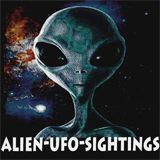Big Secrets at Area 51
Area 51 is America’s most famous—and mysterious—military test facility. The name is an unofficial one, likely reflecting the base’s parcel number as determined by Nevada land grids; today’s officially approved names are Groom Lake or, alternatively, Homey Airport. The U.S. military and intelligence communities established the base in 1955. Since then, government-approved (or tolerated) names and nicknames have included Paradise Ranch, Dreamland, Home Base, the Box, and Watertown. Although a CIA official let slip the “Area 51” designation during the Vietnam War era, no Area 51 “existed” until the CIA’s 2013 release of previously classified documents.
Isolated 124 miles northwest of Las Vegas, the base is an important focus of avionics and weapons-system development. Many believe it houses the remains of the Roswell saucer(s), and even the bodies of the extraterrestrial pilots.
Because Roswell sits about 890 miles from Groom—a distance not likely to deter military flights—a Roswell-Area 51 connection is not logistically impossible. But the U.S. government and military have steadfastly denied this, successfully putting across the notion that anyone who claims a correlation isn’t quite right in the head. Nevertheless, and assuming that whatever crashed at Roswell was not made by humans, Groom Lake/Area 51 (still designated in 1947 as Indian Springs Air Force Auxiliary Field) is a quite logical place for wreckage and other evidence to be taken: geographic isolation, an established military presence and security protocol, availability of qualified scientists, engineers, and other researchers.
Officially partnered with Edwards Air Force Base and proximate to Nellis AFB, Area 51 is a high-tech facility squatting in ninety thousand acres of flat desert scrub. Visible portions of the base occupy a relatively small footprint, and consist of runways, various radar arrays, mobile buildings (to quickly hide experimental aircraft from satellite cameras), some offices, barracks, and a mess hall. It is likely that some of the base’s research and test areas are hidden underground, though these are probably neither as enormous nor as complex as imagined by some UFOlogists, conspiracy buffs, and fans of Independence Day.
Taxpayers support the place but taxpayers are not welcome. The idle or curious that come too close are greeted by weathered metal signs that don’t mince words: RESTRICTED AREA, NO TRESSPASSING BEYOND THIS POINT. PHOTOGRAPHY OF THIS AREA IS PROHIBITED. WARNING, MILITARY INSTALLATION, OFF LIMITS TO UNAUTHORIZED PERSONNEL. USE OF DEADLY FORCE AUTHORIZED. Restricted ground is littered with buried motion sensors. Surrounding off-highway roads are patrolled by truck, and entrances are protected by guards and surveillance cameras.
Since the 1940s, this secure site has attracted active interest from many: the Naval Weapons Center, Strategic Air Command, Tactical Air Command, the National Defense Agency, Air Force Systems Command, Air Force Flight Test Center, the CIA’s Foreign Technology Division, and other bodies and groups, including various personnel contracted to the CIA and its predecessor organizations.
Extensive clandestine testing of captured Soviet MiG fighters and other foreign aircraft began at Groom Lake in 1966. Of even greater importance is that over the past sixty years the base has bred an impressive number of spy and stealth aircraft, including the U-2 (built by Lockheed’s Advanced Development Programs section, best known to the general public as the Skunk Works). Other Groom Lake/Area 51 aircraft include the CIA’s A-12 OXCART, the F-117A Nighthawk fighter (another Skunk Works success), the remarkably high-flying SR-71 Blackbird (Skunk Works), and the problematic F-22 Raptor fighter, plus various drones designed for spy and missile duty. Elements of the Strategic Defense Initiative (Star Wars) were developed at Groom. “Practical” testing of aircraft and weaponry is possible because of the base’s isolation, and nearness to the Nellis Air Force Range, the Tonopah Test Range, and the Nevada Test Site. The nearly three million acres that surround Area 51 bring enhanced privacy, as well as a wealth of dry lake beds ideally suited for takeoffs and landings.
The Roswell flying saucer idea is healthy in areas surrounding the base, in ways that are at once intentionally humorous and unintentionally desperate. The combination of Area 51 secrecy, and the public’s imagination and inclination to farce, has brought numberless toys, decals, bumper stickers, shot glasses, model kits, mugs, neckties, and some amusing faked signage. AREA 51 NO TRESPASSING, one sign begins, VIOLATORS WILL VANISH WITHOUT A TRACE.
AREA 51, Nonexistent Area, It is unlawful to enter areas that do not exist without permission of illusory installation commanders.
AREA 51, DO NOT ENTER. Trespassers will be [. . .] forcibly removed via catapult. (A tip to collectors: any sign that says “Area 51” is not the real article, even if its language is sober rather than whimsical.) The settlement closest to Area 51 is Rachel, a town of fewer than one hundred people, and marked by mobile homes, an all-in-one restaurant-bar-motel- souvenir shop, a small Baptist church—and no post office. There is a gas station but the station does not operate. Rachel sits on Nevada Highway 375, a flat, straight route designated by state signs decorated with flying saucers. A roadside “POPULATION” sign erected by the town reads “Human YES Aliens ?” Area 51/Groom Lake is about thirty-six miles north of town.
Rachel’s all-purpose motel is called the Little A’Le’Inn. Out front, hoisted on the back of a permanently parked wrecker, is a flying saucer. Guests can snug in their rooms and watch VHS episodes of The X-Files. Although ranches are in the area, Roswell and Area 51 are the basic sustenance of Rachel, and of much of the rest of this remote region. Without the saucer speculation that surrounds the base, there would be nothing to attract tourists.
